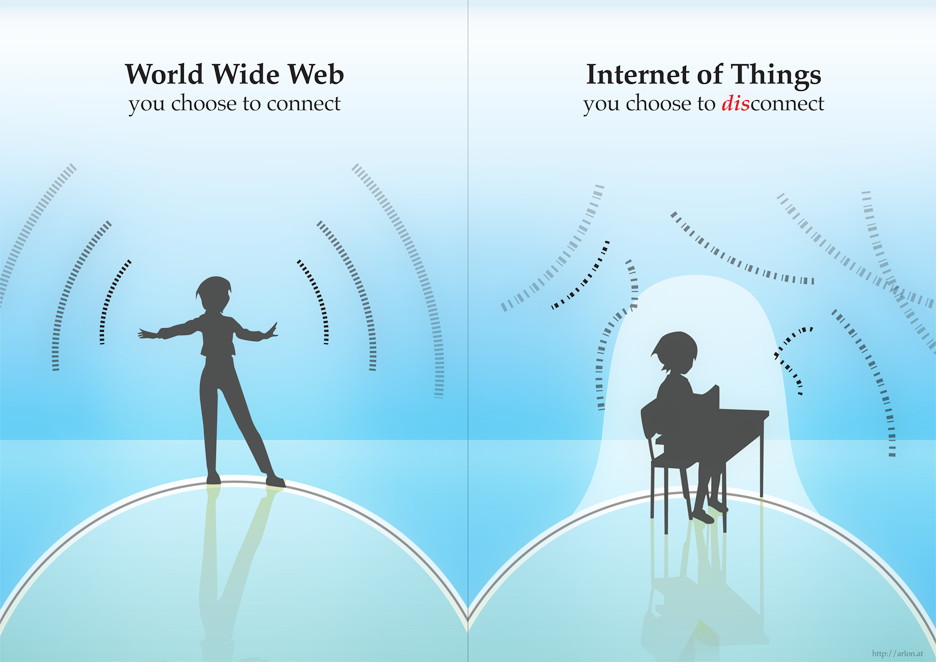Even though according to McKinsey Global Institute, the Internet of Things has the potential to create an economic impact of $2.7 trillion to $6.2 trillion annually by 2025, a vast majority of us still have none or at best very little understanding of it.
First proposed by Kevin Ashton in 1999, IoT can be best described as a structure or scenario where objects, both living and non-living, are assigned a unique identifier and using that they independently communicate with each other over a network. In this case, the Internet.
Imagine your car could automatically send messages to your mechanic’s computer. So when you take your car for a service, the mechanic already knows everything that needs to be fixed. Or imagine if your refrigerator knew the next time you walked into a supermarket and displayed to you on your smart glasses that you were running out of eggs.
Only a few years ago this was Sci-Fi movie stuff but it is catching on faster than we think. According to Cisco, 25 billion devices will be connected to the Internet by 2015 and 50 billion by 2020. IoT is already an integral part of our lives; think smartphones, smart watches, smart glasses, smart TVs and for that matter smart anything. The following 5 factors influenced by IoT could critically blindside SMBs.
Security
This one is the most obvious yet most glaring. Almost every employee or colleague you know carries a smartphone. Some if not all connect to the company Wi-Fi and/or access business emails and files using those devices. This is already a security concern. Now as devices such as watches, glasses, office printers, landline phones etc. start connecting and communicating independently to each other, the data and network security can get scarily vulnerable.
Privacy
Organisations and companies that handle personal information of their employees and customers are under increasing pressure to ensure its protection. Company policies pertaining to collection, storage, access and use of personal information will need to revised and kept up-to-date to avoid potentially expensive legal battles.
Employees
The phones we carry these days are almost always far more powerful and capable than the ageing pc’s and macs we use at work. The business software systems are similarly clunky. IoT, with its well-connected and intuitive ways, is becoming a norm for most of us. In order to increase or at least maintain creativity, productivity and engagement among employees, businesses will need to be adaptable to constantly evolving technology.
Customers
IoT will have the biggest impact on our discovery, purchase and consumption of products and services, with a conservative market value estimated to be $8.9 trillion by 2020. Businesses, no matter how traditional and seemingly secure, will urgently need to ensure their products or service are offered, delivered and supported through the right channels.
Competition
An unprepared business could rapidly leak information, data, employee and its customers. A seemingly unshakable competitive advantage could be lost quickly. Depending on the point of view, IoT’s biggest advantage and disadvantage is its ability to level the playing field. It’s not the size of the organisation, market share or capability that would count but it’s what you do with it that would make the difference.
A vast number of traditional industries are being constantly disrupted using technology as the main weapon. With willingness to adapt, the only main barrier to entry, small and medium sized businesses will need to make new technology awareness and adoption key priority to survive.
This article was written by Austin D'Mello, Managing Partner of Vocatys, an emerging technology consulting company. If you liked this article please share it with your network. You can also subscribe to the exclusive monthly newsletter by emailing us at hello@vocatys.com.
References:
- http://en.wikipedia.org/wiki/Internet_of_Things
- http://whatis.techtarget.com/definition/Internet-of-Things
- http://blogs.starcio.com/2013/06/20-reasons-why-internet-of-things-will.html
- http://teqy.co/facts-internet-things-infographic-exigent/
- http://mobilefuture.org/issues/internet-of-things/
- http://heavy.com/tech/2014/02/what-is-the-internet-of-things-definition-examples/
- http://www.baselinemag.com/innovation/slideshows/fascinating-facts-about-the-internet-of-things.html
- http://www.fastcompany.com/most-innovative-companies/2014/industry/the-internet-of-things
- http://www.informationweek.com/strategic-cio/executive-insights-and-innovation/internet-of-things-done-wrong-stifles-innovation/a/d-id/1279157
- http://www.mckinsey.com/insights/business_technology/disruptive_technologies
- http://newsroom.mastercard.com/news-briefs/new-research-finds-gaps-between-small-businesses-and-technology-adoption/
- http://blogs.office.com/2014/05/15/survey-finds-technology-is-critical-for-small-business-owners-but-many-have-yet-to-adopt-cloud-solutions/







 RSS Feed
RSS Feed